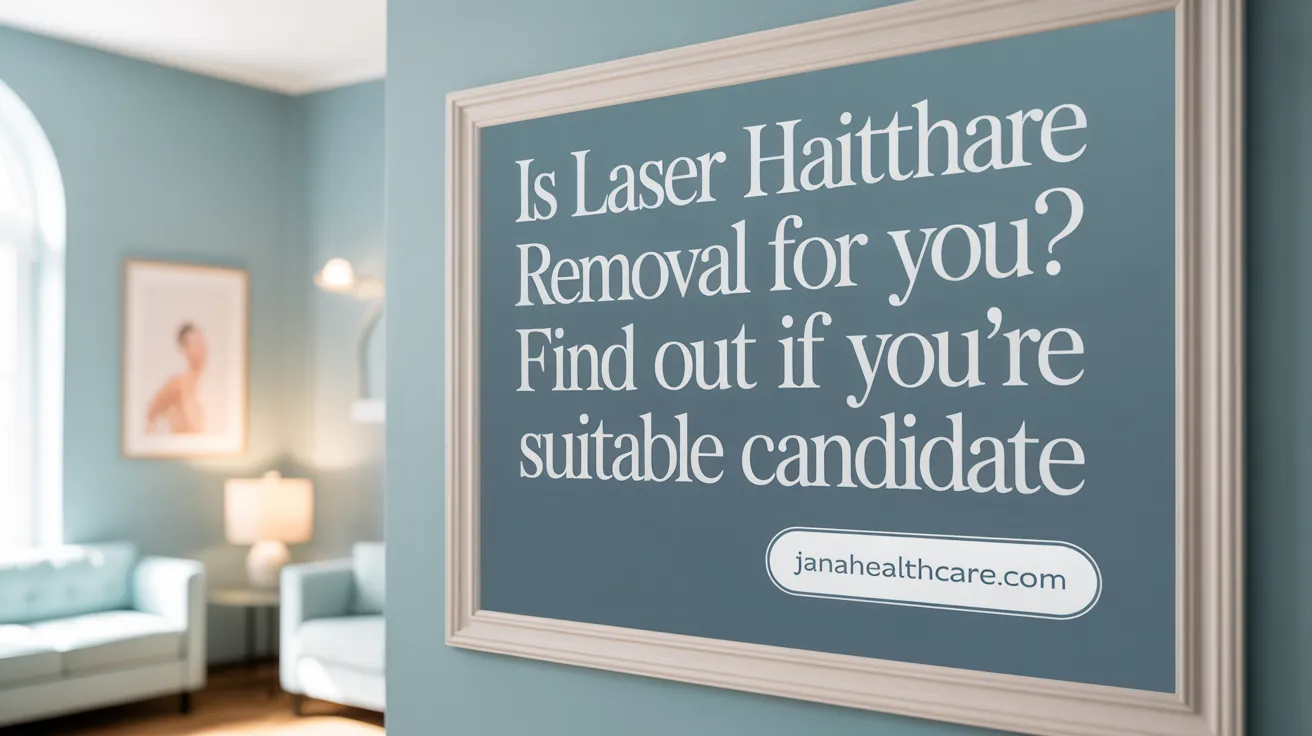Understanding Laser Hair Removal: An Overview
Laser hair removal is a widely sought cosmetic procedure for long-term hair reduction. This treatment uses advanced laser technology to target pigment in hair follicles, damaging them to inhibit or delay future hair growth. Ideal for various body areas, laser hair removal promises convenience and efficacy, but understanding the science, preparation, treatment process, and safety considerations is key to achieving the best results.
The Science Behind Laser Hair Removal: How It Works

Principle of selective photothermolysis
Laser hair removal is founded on the principle of selective photothermolysis, which means using specific wavelengths of laser light to target hair while sparing surrounding tissue. The laser emits highly concentrated light that penetrates the skin and is absorbed by melanin, the pigment in hair. This absorption converts light energy into heat, selectively damaging the hair follicles to inhibit or delay hair growth.
Role of melanin and laser wavelengths
Melanin is the key factor in laser hair removal. Darker hair contains more melanin, making it more receptive to laser treatment. The lasers used typically operate within the wavelength range of 600 to 1200 nanometers, where melanin effectively absorbs the light. Common laser systems include diode, alexandrite, Nd:YAG, and IPL devices. Each type has a specific wavelength suited for different skin and hair types, with Nd:YAG lasers being safer for darker skin tones due to their deeper penetration and lower melanin absorption. Learn more about laser hair removal types and wavelengths.
Hair growth phases and treatment timing
Hair grows in cycles, with only those in the anagen (active growth) phase responding well to laser treatment. Since not all hairs are in this phase simultaneously, multiple sessions are required—usually 4 to 8—spaced 4 to 8 weeks apart. This timing ensures that the laser targets hairs as they enter the growth phase, achieving optimal results. See details on hair growth cycles and laser effectiveness.
Common laser types and their suitability
Several laser types are used in hair removal, each with distinct advantages:
| Laser Type | Wavelength (nm) | Suitability | Notes |
|---|---|---|---|
| Alexandrite | 755 | Light skin, dark hair | Fast, effective for large areas |
| Diode | 810 | Light to medium skin, dark hair | Versatile, widely used |
| Nd:YAG | 1064 | Darker skin tones | Safer for darker skin, slower |
| IPL (Intense Pulsed Light) | 500-1200 | Variable skin tones | Not a true laser, less precise |
The choice of laser depends on skin tone, hair color, and the area being treated. Proper selection helps maximize safety and efficacy.
In summary, laser hair removal works by using targeted light energy absorbed by melanin in hair follicles, damaging them to reduce hair growth. It is most effective on suitable skin and hair combinations, with multiple sessions needed to treat all hair growth phases effectively.
Who Benefits Most? Suitability and Indications

Who is suitable for laser hair removal and who can benefit from it?
Laser hair removal is particularly effective for individuals with light skin and dark hair, as the high contrast allows the laser to target melanin efficiently in hair follicles. This makes it an ideal choice for many people looking to reduce unwanted hair on areas such as legs, underarms, face, and bikini line.
However, advances in laser technology, especially the development of Nd:YAG and dual-wavelength systems, have made treatment safer and more effective for darker skin tones. These newer systems minimize risks like skin discoloration and burns, broadening the pool of suitable candidates.
Most candidates are those seeking a long-term reduction rather than complete permanent removal. The procedure offers a convenient alternative to frequent shaving, waxing, or plucking, especially for those with busy lifestyles or sensitive skin prone to irritation.
Before starting treatment, a comprehensive consultation is essential. The healthcare provider will evaluate factors such as skin type, hair color, medical history, medications, and any skin conditions to determine personal suitability. This assessment helps ensure safety and enhances the likelihood of achieving optimal results.
Overall, laser hair removal benefits those desiring efficient, minimally invasive hair reduction with a low risk profile when performed by trained specialists. When appropriately selected, candidates can enjoy smoother skin, fewer ingrown hairs, and reduced hair regrowth over time.
Preparing for Laser Hair Removal: Guidelines for Safety and Effectiveness

How should one prepare before undergoing laser hair removal to maximize safety and effectiveness?
Proper preparation before laser hair removal is essential for achieving optimal results and minimizing potential risks. Patients are advised to avoid sun exposure , tanning beds, and self-tanning products for at least two weeks before treatment. Applying a broad-spectrum SPF 30+ sunscreen daily helps protect the skin and maintain skin tone.
Discontinuing hair removal methods that remove hair from the root, such as plucking, waxing, threading, or electrolysis, is crucial. These should be stopped at least four weeks prior to treatment because they temporarily remove or damage hair follicles, which are the targets of laser therapy.
Shaving the treatment area 24 to 48 hours before the appointment is recommended. This ensures that long hairs do not interfere with laser penetration and reduces the risk of burns during the procedure. It also allows the laser to focus on the hair roots beneath the skin.
Patients should avoid using harsh skin products like exfoliants, retinoids, or acids (such as salicylic or glycolic acid) for about two weeks before treatment. These can increase skin sensitivity and risk of adverse reactions.
On treatment day, the area should be clean, free of makeup, lotions, deodorants, or creams. Wearing loose, comfortable clothing after the session can help reduce skin irritation.
Additionally, patients should discuss their full medical history and medication use with their provider. Certain medications and health conditions can influence treatment safety and outcomes. Following these guidelines helps improve efficacy and reduces the likelihood of side effects, ensuring a safe laser hair removal experience.
Step-by-Step: What to Expect During a Laser Hair Removal Session
A typical laser hair removal procedure session begins with cleansing the targeted skin area to remove oils and impurities, ensuring the skin is clean for optimal laser hair removal effectiveness. Both the patient and practitioner wear protective eyewear during laser treatment to guard against the laser's concentrated light, which can be harmful if it comes into direct contact with the eyes.
Depending on the sensitivity and size of the treatment area, a topical anesthetic use may be applied to minimize discomfort during the procedure. This numbing cream is usually left on for about 30 to 60 minutes before treatment.
The practitioner then adjusts the laser device settings based on the patient’s skin type, hair color, and the area being treated. Proper calibration is essential to maximize results and minimize side effects as explained in the laser hair removal procedure guidelines.
Next, the laser technician presses the hand-held laser device against the skin, delivering pulses of laser light. The sensation during this process is often described as feeling like warm pinpricks or a quick rubber band snap, described in detail under laser hair removal pain and sensations.
Throughout the treatment, the laser’s energy targets the pigment in hair follicles, heating and damaging them to inhibit future hair growth. Cooling gels or devices are frequently used during or immediately after the laser application to soothe the skin and reduce redness or inflammation as part of skin cooling during laser treatment.
Depending on the area size, sessions can be brief. Small areas such as the upper lip typically take only a few minutes, while larger areas like the legs or back can take up to an hour. Post-treatment, patients might experience temporary redness and warmth, which usually resolve within hours, referred to under common side effects of laser hair removal.
Cooling compresses or soothing gels are often recommended after the session to help ease discomfort and support healing. The entire process is quick, minimally invasive, and tailored to individual needs, providing an effective approach to long-term hair reduction.
For more detailed steps, searching "laser hair removal procedure steps" can offer additional insights and preparation tips.
Expected Outcomes: Effectiveness and Typical Results
What outcomes and effectiveness can one expect from laser hair removal?
Laser hair removal generally offers a substantial reduction in unwanted hair. Most individuals can expect to see between 70% and 90% decrease in hair growth after completing a series of treatments. Initially, patients often notice a 10% to 25% reduction in hair after the first session, with improvements gradually occurring with each subsequent treatment (Laser hair removal effectiveness, Laser hair removal overview).
Degree of hair reduction per session
Each session targets hair in the active growth phase, which results in gradual and consistent hair shedding over days to weeks following treatment. The process minimizes hair in the treated area over time, leading to less noticeable or finer hair. While some hairs may fall out immediately, most shed gradually, which can affect how quickly results are seen (Hair shedding after laser treatment, Post-treatment care for laser hair removal).
Multiple session necessity
Achieving optimal results typically requires multiple treatments, usually between 4 to 6 sessions, spaced approximately 4 to 6 weeks apart. This schedule accounts for the hair growth cycle, as different hairs are in varying stages. Additional maintenance sessions may be needed in the future to address any regrowth (Number of laser hair removal sessions, Hair growth cycles and laser effectiveness).
Duration of results and maintenance
The reduction in hair growth from laser treatments can last for months or even years. Many clients enjoy long-lasting results, reducing the need for shaving, waxing, or plucking. However, because hair growth is influenced by hormones and genetics, some hair may eventually regrow in finer and lighter forms. Periodic touch-up treatments can help maintain the initial hair-free appearance (Duration of laser hair removal results, Maintenance after laser treatment).
Variability by skin and hair type
The effectiveness of laser hair removal varies depending on skin tone and hair color. Dark, coarse hair on light skin tends to respond best due to higher melanin content, which absorbs laser energy efficiently. Advances in laser technology now extend effective treatment options to darker skin tones. Conversely, lighter hair, such as blond, gray, or white, lacks sufficient pigment for the laser to target, making treatment less effective (Effectiveness of laser hair removal on skin and hair types, Best candidates for laser hair removal).
Limitations and regrowth patterns
While laser hair removal significantly reduces hair growth, it does not guarantee complete and permanent removal for everyone. Some hairs may eventually regrow, but these are typically finer and less dense. Changes in hormonal levels or medications can also influence regrowth patterns, necessitating occasional maintenance treatments (Hair regrowth patterns, Risks of laser hair removal treatment).
| Aspect | Typical Outcome | Notes |
|---|---|---|
| Hair reduction after series | 70-90% | Varies by individual and treatment area (Laser hair removal effectiveness) |
| Sessions needed | 4-6 | Spaced every 4-6 weeks (Number of laser hair removal sessions) |
| Duration of effects | Months to years | Long-term, but not always permanent (Duration of laser hair removal results) |
| Common regrowth pattern | Finer, lighter | May occur in some cases (Hair regrowth patterns) |
| Best suited for | Dark hair on light skin | Advances now include darker skin types (Effectiveness on skin and hair types) |
| Limitations | Less effective for light hair | No effect on hair without pigment (Limitations of laser hair removal) |
Understanding these expected results can help set realistic expectations and guide follow-up care. While the process offers substantial long-term benefits, individual responses vary, and occasional maintenance sessions might optimize and sustain the benefits (Post-treatment care for laser hair removal, Multiple laser hair removal sessions).
Risks, Side Effects, and Safety Considerations

What risks, safety considerations, and possible side effects are associated with laser hair removal?
Laser hair removal, like any medical procedure, involves certain risks and safety considerations. Most patients experience minor and temporary side effects such as redness, swelling, slight discomfort, and skin irritation that usually resolve within a few days. However, there are rare risks of more serious complications, including burns, blistering, scarring, and permanent skin color changes—either darkening (hyperpigmentation) or lightening (hypopigmentation)—especially in individuals with darker skin tones (side effects of laser hair removal).
During the treatment, protective eyewear must be worn at all times to prevent eye injury from the laser pulses. Proper pre- and post-treatment care is crucial: avoiding exposure to direct sunlight and tanning beds helps reduce the risk of pigmentation issues (post-treatment care for laser hair removal). Furthermore, avoiding procedures such as plucking, waxing, or electrolysis before the treatment helps maintain the integrity of the hair follicle targeting process (preparing for laser hair removal).
Safety protocols also involve selecting the correct laser type and calibrating it appropriately for the individual’s skin and hair type (laser hair removal procedure). For darker skin tones, lasers like Nd:YAG are preferred due to their lower risk of pigment alteration (laser hair removal for different skin tones). Only trained, board-certified dermatologists or qualified medical professionals should perform laser hair removal to minimize risks and ensure proper technique (importance of board-certified dermatologist for laser hair removal).
Adherence to safety guidelines and proper equipment use significantly decrease the likelihood of adverse effects (laser hair removal safety and effectiveness). Patients should be thoroughly evaluated for their skin and hair type, medical history, and any skin conditions. Open communication with the provider about medication use and skin sensitivities is vital for a safe procedure (preparing for laser hair removal). Proper aftercare, including avoiding sun exposure and following dermatologist instructions, is essential in preventing complications and achieving optimal results (post-treatment care for laser hair removal).
Post-Treatment Care: Supporting Skin Health and Prolonging Results

What are the post-treatment care guidelines to maintain results and manage side effects?
After laser hair removal, proper skin care plays a vital role in maintaining results and minimizing side effects. It is essential to avoid direct sun exposure and tanning beds for at least two weeks following treatment. The skin remains sensitive and exposed areas can easily develop pigmentation issues if not protected.
Using a broad-spectrum sunscreen with at least SPF 30+ whenever going outdoors is crucial. This shields the skin from UV rays that can cause darkening or burning of the treated area. Applying cooling measures such as cold compresses or soothing gels can help alleviate redness, swelling, and mild discomfort, which usually subside within a few hours to days.
During the recovery period, it is recommended to avoid hot showers, saunas, steam rooms, and intense exercise for at least 48 hours. These activities can increase blood flow and cause irritation or prolonged redness. Wearing loose-fitting clothing around treated areas helps reduce friction and prevents irritation.
Gentle cleansing of the skin with mild products and regular moisturizing support healing, keeping the skin hydrated and resilient. It is advisable to avoid applying any aggressive skincare products, such as acids, retinoids, or chemical peels, for at least two weeks post-treatment.
Following your provider's specific instructions is essential. They may suggest topical antibiotics or steroids if irritation persists or if there are minor skin reactions.
To sustain long-term results, adhering to scheduled maintenance sessions as recommended by your board-certified dermatologist is important. These periodic treatments help target any residual hair follicles and prevent regrowth.
Consistent post-care not only supports skin health but also enhances the effectiveness of laser hair removal, making your results last longer while keeping your skin safe and healthy.
Comparing Laser Hair Removal to Other Hair Removal Methods
Laser hair removal has become a popular choice for long-term hair reduction, especially when compared to traditional methods like shaving, waxing, or using depilatory creams. One of its main advantages is its ability to significantly decrease hair growth for months or even permanently, unlike shaving or waxing, which provide only temporary results. This long-lasting effect makes it a cost-effective option over time, as fewer treatments are needed compared to the ongoing expense of other methods (Laser hair removal effectiveness).
In terms of discomfort, laser treatments are generally more tolerable than waxing. Many patients describe the sensation as a gentle rubber band snap or a warm pinprick. Modern cooling systems incorporated into laser devices help minimize pain, making sessions more comfortable (Laser hair removal pain and sensations).
Risks of skin irritation and ingrown hairs are notably lower with laser hair removal. Unlike waxing or plucking, which can cause skin irritation, redness, and ingrown hairs, laser treatments target hair follicles precisely, reducing these common side effects. Patients with darker skin types or light-colored hair should consult a professional because technology has advanced to safely treat a broader range of skin tones, although results may vary (Laser hair removal risks; Laser hair removal for different skin and hair types).
Regarding treatment duration and convenience, laser procedures are swift, especially for small areas like the upper lip or underarms, taking just minutes. Larger areas like legs or back might require up to an hour. Multiple sessions—typically 2 to 6 spaced several weeks apart—are necessary to target hair in various growth phases, but post-treatment redness and swelling are usually mild and resolve quickly (Procedure for laser hair removal; Multiple laser hair removal sessions).
Cost considerations are important. While initial expenses are higher than shaving or waxing, the reduced number of treatments and minimal ongoing costs can make laser hair removal more economical long-term. Maintenance sessions might be needed annually or biannually to sustain results (Number of laser hair removal sessions; Laser hair removal cost).
Overall, laser hair removal offers a safe, effective, and relatively comfortable alternative with lasting effects. When performed by skilled professionals, it significantly reduces hair growth, skin irritation, and ingrown hairs compared to other hair removal options (Importance of board-certified dermatologist for laser hair removal; Safety and efficacy of professional laser treatments).
Final Thoughts on Laser Hair Removal
Laser hair removal represents a sophisticated, effective approach to long-term hair reduction, integrating advanced technology with tailored treatment strategies. Its effectiveness relies on understanding the hair growth cycle, proper patient selection, meticulous preparation, and adherence to safety protocols both during and after sessions. While side effects are generally mild and transient, choosing a qualified professional is paramount to minimizing risks and optimizing results. With multiple sessions, appropriate aftercare, and realistic expectations, patients can enjoy significant hair reduction and improved skin comfort, making laser hair removal a valuable consideration for those seeking more permanent alternatives to traditional hair removal methods.
